Americans don’t get out much.
That should come as no surprise considering that, according to the U.S. State Department, only 27 percent of Americans hold a valid passport. That means that 73 percent of Americans couldn’t get out to see the rest of the world even if they wanted to; even if all they wanted to see was Mexico or Canada.
And where do those approximately 81 million Americans who do hold a valid passport travel to when they seek to explore the world? Almost without exception, they travel to fully developed countries or stay in walled off resort compounds.
The top five international destinations for Americans are:
• Canada
• Caribbean/Bermuda
• Mexico
• British Isles
• France
Of the few places Americans visit outside their borders, the international destinations that please them most are those that require the least amount of cultural adjustment, learning or adaptation:
• Australia
• London
• Ireland
• Scotland
• British Columbia
Given these facts, it should then come as very little surprise when I tell you that most Americans are shocked to learn that the developing world is not as undeveloped as Americans tend to think it is. They are surprised when we relate the realities of third world life, given that their impressions of the world outside the U.S. border are mostly informed by sensationalist news stories and charity appeals featuring infants and toddlers with distended stomachs and squadrons of flies.
Americans tend to think of everyone in the world outside of Western Europe, Japan, the boom cities of China and Australia as living an extremely isolated dirt poor existence; struggling for survival and weeks of travel from the nearest civilization. The facts on the ground are different than the typical American’s perceptions. For instance, there are more people with cell (mobile) phones in India than there are people in America. And a new study by the World Bank and the European Commission’s Joint Research Center shows that nearly everyone on the planet is within two days of land travel from a major population center.
That last bit, essentially everyone being only two days from their nearest Kentucky Fried Chicken outlet, is very disorienting. After all, when you view the earth’s vegetation, it’s hard to imagine that could be possible.
(click on image for full resolution version)
When people in the west think about developing world travel, they tend to think about ox carts or camelback. In reality, the world has about 800 million passenger vehicles now and is headed for having one billion cars and light trucks by 2020.
The world’s road network is vast, and penetrates much more of the planet than people typically predict.
(click on image for full resolution version)
Even in regions most Americans would predict would be remote areas filled with grass huts populated by hunters and gatherers, such as West Africa, there are extensive networks of roads and tracks.
(click on image for full resolution version)
.
And even where there are no roads, there are rivers, the conduit of commerce in prior centuries.
(click on image for full resolution version)
.
When you add in railroads,
(click on image for full resolution version)
.
and ocean routes,
(click on image for full resolution version)
You can see that the world really knows how to get around.
Add it all together,
(click on image for full resolution version)
and what you get is a world that is very, very connected.
In this map, the bright colors indicate short travel times, dark areas indicate long travel times to the nearest city of 50,000 people.
There are some surprises here. For instance, in the Amazon basin, a place most Americans would consider extremely remote, only 20% of people are more than two days land travel from a major city, about the same percentage as Canada’s Quebec Province (which some Americans would no doubt consider equally remote, exotic and challenging).
So, where is the most remote place on earth, the place farthest away by travel days than any other?
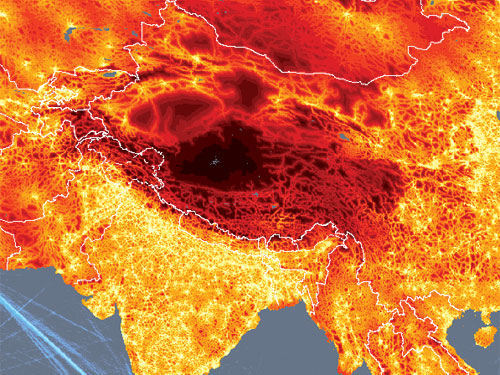
.
It is the Tibetan plateau (34.7°N, 85.7°E). From that spot it is a three-week trip to the cities of Lhasa or Korla – one day by car and the remaining 20 on foot.
So the next time you really want to get away, even farther away than a Caribbean resort, far enough away there are no McDonald’s drive through windows, far enough away that your smart phone won’t ring, far enough away it would take days for anyone to come and remind you of the next deadline or to take out the trash, you know where you’ll need to go.
*****
Sources:
• European Commission Joint Research Centre
• World Bank
• New Scientist
• International Finance Corporation
• New York Times
• TNS
• U.S. State Department
• Toronto Star
.
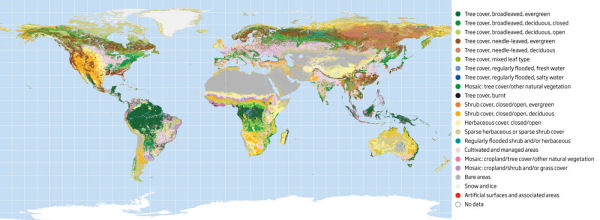
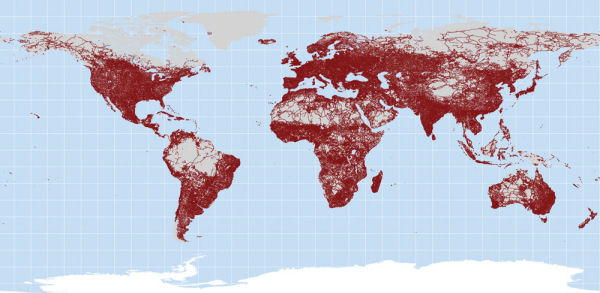
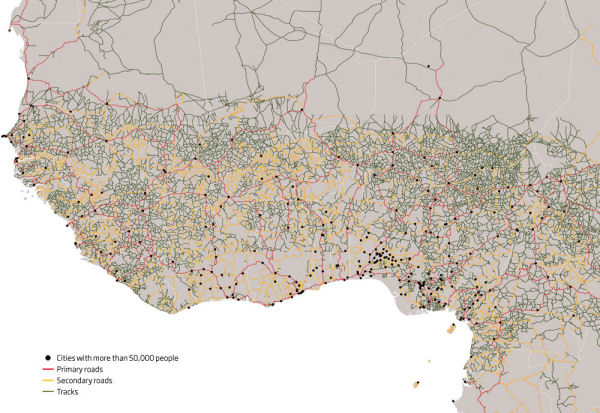
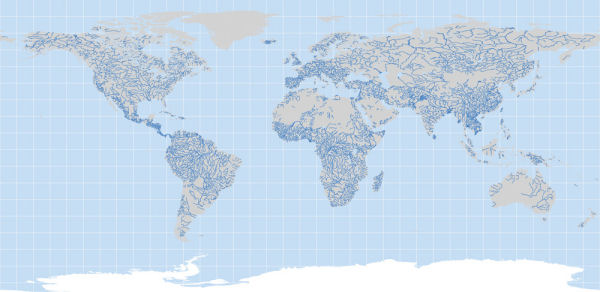
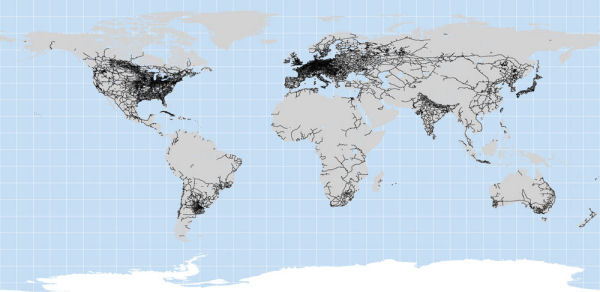
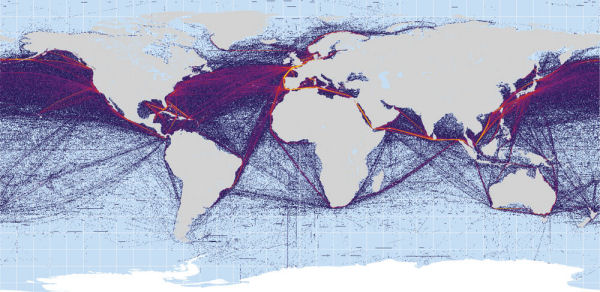
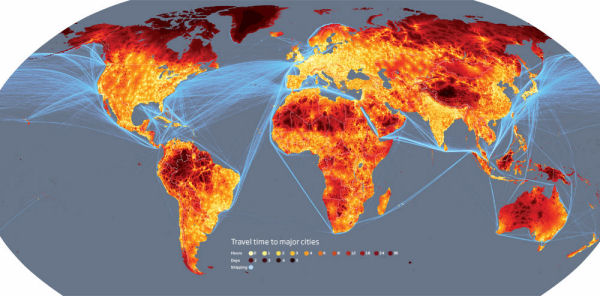
Great information Doug! keep it coming. You have a way with words!
I suppose it shoudn’t, but it surprises me that so few Norte Americanos wish to travel to challenging places. While I unquestionably love such places as Paris, London, Rome, and Madrid, some of the best times I’ve had have been in out-of-the-way places, where hardly anyone spoke English and where so-called civilization was a long way away.
At any rate, thanks for your thought-provoking article.
Cool. Now that you’ve done the American perception of the World, can you do us a post on the World’s perception of Americans?.
If anything I’m suprised that the notion of the insular American still get’s any attention.
Granted I’ve never spent any length of time in the US but the Americans I know, are not the ones described here. Perhaps being abroad, they are the de facto exception.
Rob,
I think you’ve identified the phenomenon at work: “being abroad, they are the de facto exception.”
Americans that travel, especially overseas, and very especially to developing countries, are, by their very nature, self-selective.
They are outliers by definition, and thus outside the norm; which here in America ranges from insular to hyper-insular.
Doug
Doug, your data collection and data summary is impressive. Having been to AUS, NZ, and every Caribbean Island From USVI to Granada I have to agree. The world is one connected and developed place that is growing at hyper speed. Now I know why those Monks can focus so well…next time I need some peace, it looks like I need to go swing by the Tibetan plateau. 🙂
Doug,
Thanks for another great article. The speed that roads are being built or improved in what Ted Simon calls “The Unfinished World” is stunning. Data communications are being installed and improved at an even faster rate (the roads for the 21st Century?) with over 4 billion of us being connected.
It’s easy for us Westerners to be a bit complacent, as we’re so comfortable. Stewart Brand in his “Whole Earth Discipline” talks about the innovation in slums in the developing world and the micro-economies and micro-societies that are establishing themselves should give us something to thing about – we’re not only comfortable, we’re complacent and the billions in the developing world are going to be the largest source of innovation the world has ever seen in the coming century.
And if you don’t “get out more”, you won’t even see it coming.